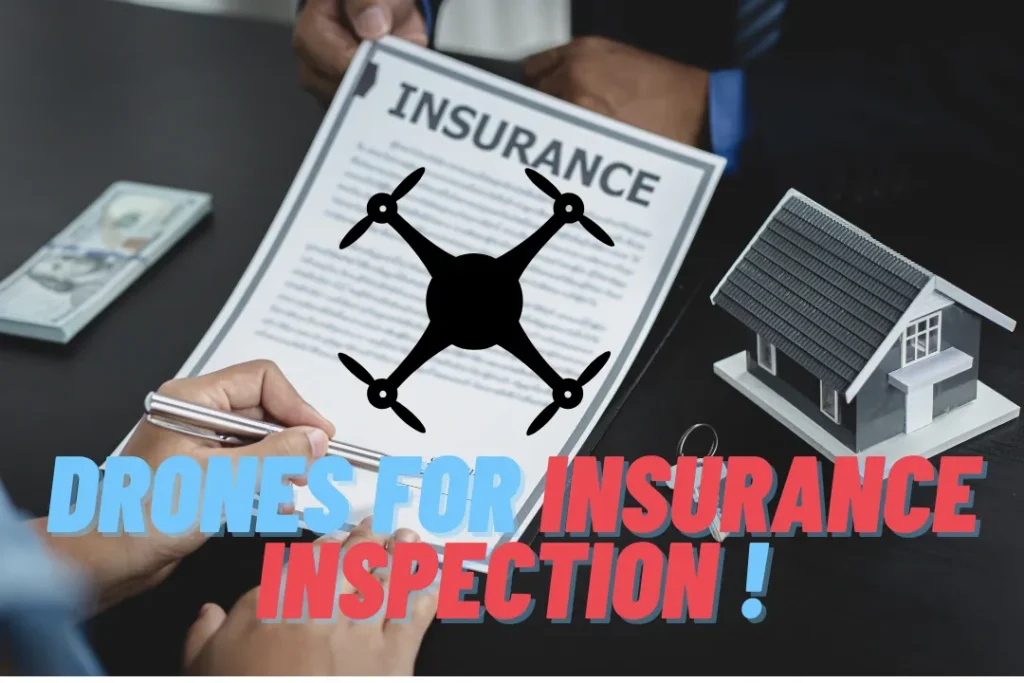Drones for Insurance Inspections: How They’re Changing the Game

Insurance firms are continually seeking methods to increase their speed and efficiency. Drones are one of the most fascinating technologies now shaking up the industry.
These small, unmanned flying gadgets, often known as UAVs (Unmanned Aerial Vehicles), are becoming an important instrument in insurance examinations. From storm damage to routine inspections, drones save time, and money, and make things safer for everyone involved.
Traditional insurance inspections can be time-consuming, expensive, and unsafe. Consider an inspector climbing onto a roof to check damage after a hailstorm. It’s time-consuming and perhaps dangerous.
In other cases, such as after a natural disaster or in a flood zone, accessing the affected areas can be difficult and dangerous. Adjusters are frequently required to visit many locations, prepare reports, and deal with all of the paperwork, which can make the process lengthy.
Customers can find the delay annoying. They are coping with property damage and need their insurance claim resolved quickly. Every day that passes without an inspection means a delay in receiving the funds needed to make repairs. Insurance firms are also facing rising prices.
Paying inspectors for their time, travel, and equipment increases the cost. When there is a rush in claims following an event like a storm, it is difficult to keep up with the demand for inspections.
Impacts Of Delayed Inspections
It can negatively impact both customers and insurance companies. Customers who have already sustained harm are left waiting, which can be quite distressing.
Imagine waiting for an adjuster to come look at your property after a storm, while water damage or broken windows exacerbate the problem. The longer it takes for someone to assess the property, the more damage can occur—which results in higher repair expenditures in the end.
Delayed inspections can result in negative consumer feedback and a loss of trust for insurance firms. If people believe their claims are taking too long to process, they may transfer to another insurer in the future. Furthermore, if the damage is left unchecked for too long, the costs of claims may rise due to additional damage.
In 2017, Allstate Insurance found itself in the same scenario. After hurricanes hit Texas and Florida, the company received a deluge of claims and struggled to keep up with standard inspection methods. Customers were irritated by the sluggish process, so the organization looked for a better option.
The Solution: How Drones Are Addressing the Problem
Drones have emerged as an excellent tool for expediting the insurance inspection procedure. Here’s how they’re transforming the game:
1. Faster inspections.
Drones can finish inspections far faster than humans can. A drone can fly overhead and capture precise images and videos in a matter of minutes, eliminating the need to climb ladders or stroll around huge properties. In a matter of minutes, a drone can fly overhead and take precise pictures and movies. This reduces backlogs following significant storms or disasters for insurance firms by enabling them to handle more claims in less time. According to Allstate’s case study, employing drones sped up their inspection procedure by 25%, enabling them to handle more claims and satisfy their clientele.
2. Enhanced Security
Using drones reduces the need for inspectors to climb unsafe roofs or enter hazardous locations. Even though it might not be safe to stroll around the property after a fire or flood, a drone can easily fly over and take all the essential pictures. Drones lower the possibility of workplace accidents by keeping inspectors out of harm’s way.
3. Economical
Drones save insurance companies a lot of money over time, even if they have an initial cost of purchase and upkeep. With drones, there’s no need to send inspectors on long trips to visit isolated properties, and fewer man-hours are needed to perform inspections. According to Allstate’s case study, deploying drones resulted in a 40% decrease in inspection expenditures.
4. Precise Data Gathering
Drones can take detailed pictures from a variety of perspectives because they are outfitted with excellent cameras and sensors. It can be challenging to attain this degree of accuracy using conventional inspections. Plus, drones can generate a permanent visual record of the damage, which can be inspected later if needed. Insurance companies may make better-informed decisions more quickly with the use of this data.
Allstate’s Success Story: Drones In Action
In 2017, Allstate faced a major issue. Following hurricanes in Texas and Florida, they had thousands of claims to file, and their regular inspection procedures simply couldn’t keep up. That’s when they switched to drones.
Allstate began employing drones to evaluate properties that were difficult to access, such as flood-prone locations or those with considerable damage. In just 72 hours following Hurricane Harvey, they were able to accomplish over 500 inspections thanks to the drones. This resulted in a 40% boost in efficiency over using typical inspectors.
Not only did drones speed up inspections, but they also increased customer satisfaction. People enjoyed the speedier service and claims processing. Furthermore, Allstate was able to reduce inspection expenses by 40% while keeping their adjusters safe by not sending them into high-risk areas.
Real-World Applications of Drones in Insurance
Drones are handy for more than just inspecting storm damage; they also have several insurance-related applications.
1. Natural disasters
After hurricanes, tornadoes, or wildfires, drones can be used to quickly examine broad regions of damage. This streamlines the process of handling several claims at once, allowing insurers to keep on top of things during crises.
2. Routine Property Inspections
Drones can also be utilized to do routine property inspections. Drones can monitor continuing risks and provide insurance firms with a comprehensive image of prospective liabilities, whether they are in a home, a business structure, or a construction site. Early detection of minor issues can help to avoid larger claims later on.
3. Monitoring ongoing risks
Drones can help insurers track development and identify potential hazards at construction sites and other busy properties. This allows insurance firms to intervene early to mitigate risks and avoid costly claims in the future.
The Future Of Insurance Inspections
The usage of drones for insurance checks is only going to increase. Drones are becoming an indispensable tool for insurance firms due to their ability to do inspections faster, safer, and more affordable. They enable more efficient handling of claims, more precise evaluations, and improved customer service in general.
The case study from Allstate demonstrates the full potential of this technology. Drones provide a useful, effective answer at a time when insurance firms are managing more claims than ever before. Businesses save time and money, and customers receive speedier service resolving their claims.
We may anticipate even more advancements in the way insurance inspections are carried out as drone technology becomes more sophisticated and popular. Drones are enabling the insurance inspection of the future, which has arrived.



